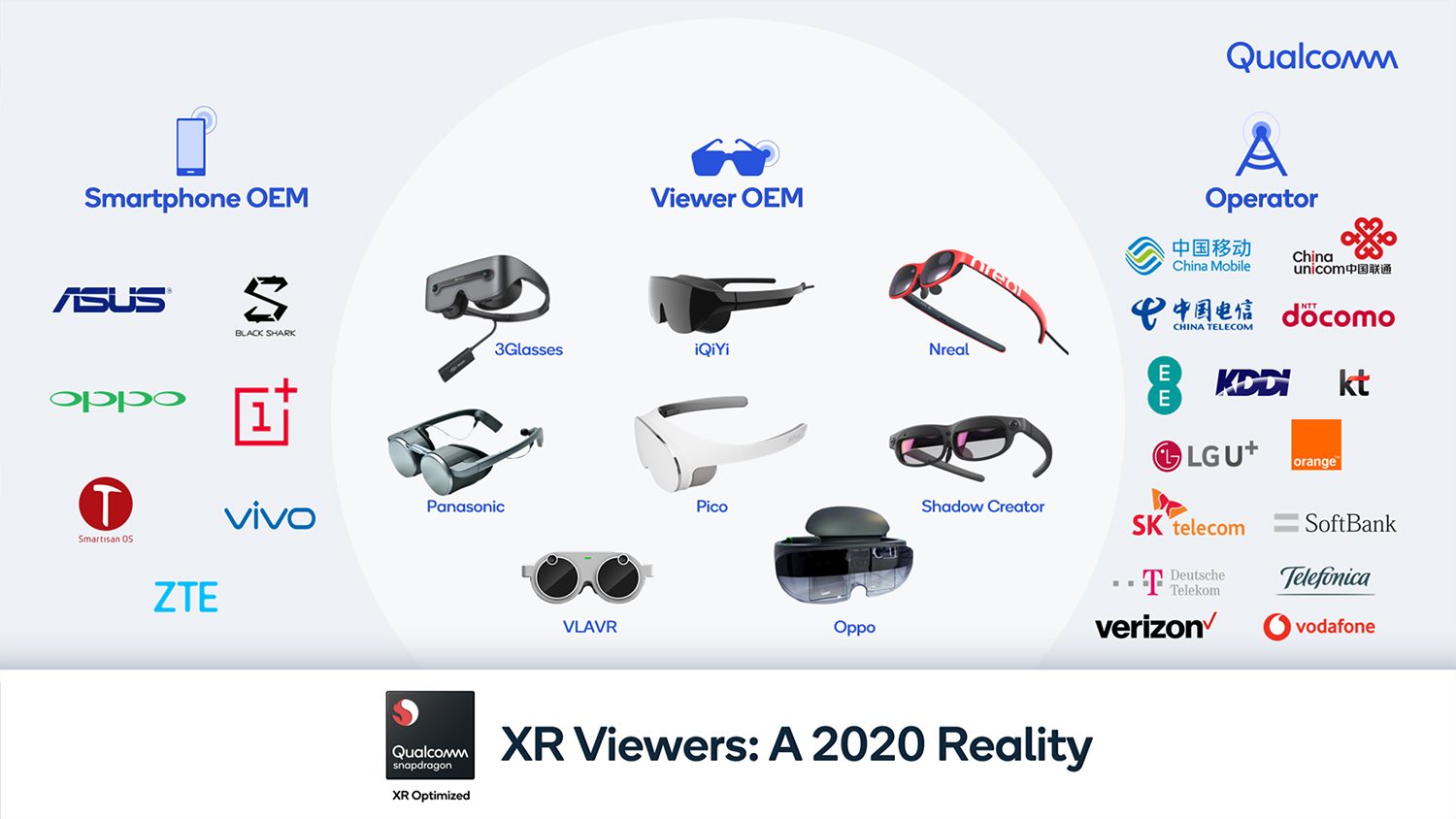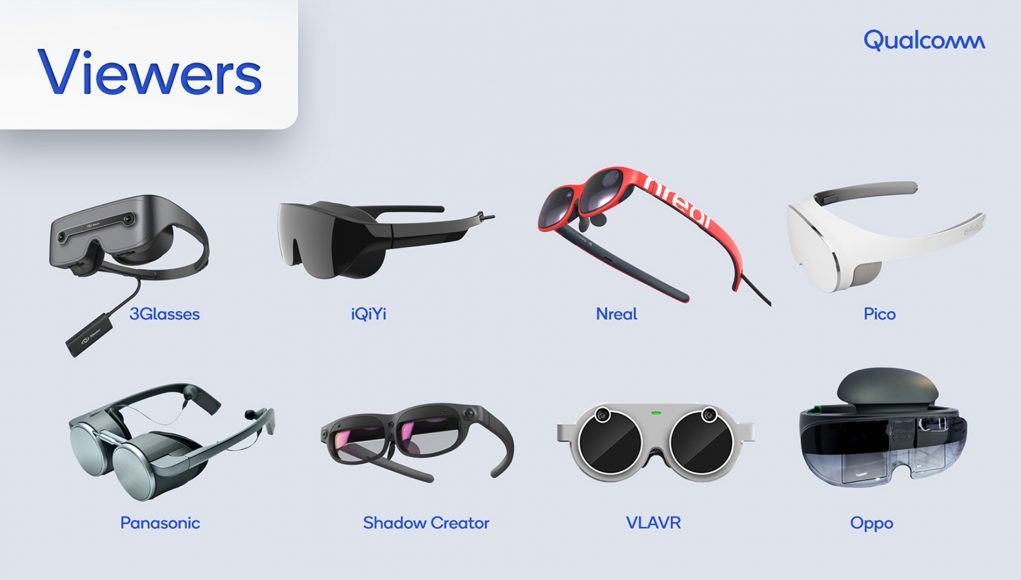Today, at an online version of this year’s Augmented World Expo (AWE), Qualcomm announced that it’s partnered with a number of global telecoms, smartphone companies, and AR/VR headset manufacturers to deliver 5G-enabled, smartphone-driven headsets to consumers and enterprise customers. It plans to do so within the next year.
The semiconductor giant has partnered with fifteen global telecoms across Asia, Europe, and North America. Qualcomm says the following service providers will be commercializing some form of ‘XR viewer’ within the next year: China Mobile, China Telecom, China Unicom, Deutsche Telekom, EE, KDDI, KT, LG Uplus, NTT DOCOMO, Orange, SK Telecom, SoftBank, Telefonica, Verizon, and Vodafone.
When Qualcomm says ‘XR viewer’, it’s specifically referring to lightweight AR or VR headsets that connect to a smartphone, which in Qualcomm’s case will either be powered by a Snapdragon 855 or 865 chipset, and connect to 5G-enabled handsets via USB-C cable.

The company has also set up a validation process—called Qualcomm XR Optimized Certification Program—to make sure headsets and individual smartphones are up to snuff and work properly together.
The program is intended to certify things on both viewers and smartphones like 6DOF performance, motion to photon latency, power and thermals, and interoperability. Qualcomm will be including a badge as well, so you know what’s been certified as XR compliant.
Headset and smartphone manufacturers already going through the process include 3Glasses, iQIYI, Nreal, OPPO, Panasonic, Pico and Shadow Creator. Smartphone OEMs ASUS, BlackShark, OnePlus, OPPO, Smartisan, vivo, ZTE, are said to follow.
Earlier this year Qualcomm announced that it was effectively powering more than 30 AR and VR headsets, some of which are standalone devices incorporating Snapdragon processors.







